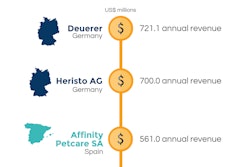
Pet food research has been in the news lately. For example, Mars Petcare just settled charges with the US Federal Trade Commission (FTC) over allegedly false advertising about longevity benefits of Eukanuba dog food. Mars ads claimed the food could extend the expected lifespan of dogs by 30% or more, based on a 10-year study it conducted; FTC said the company did not have the scientific evidence to prove the claim. It’s difficult to know which side to believe, because as far as I know, Mars’ study was not published.
The pet food and treat products produced and sold today offer high-quality nutrition for companion animals, based on a wealth of scientific research and knowledge. Yet much of the latest research is not available to the industry at large, nor to veterinarians, consumers or other interested parties, because it’s conducted mainly by pet food companies that often consider it proprietary.
Even when a study is done by a university’s companion animal nutrition or other pet-related program, it typically is funded by a pet food company, and the researchers are not allowed to share their findings (or can share only a portion). It also doesn’t help that there are only about a dozen such academic programs worldwide.
Of course, Mars and other pet food companies have every right to decide how much to share, if any, of the research they conduct or commission. The real problem is that there’s no other source of funding for pet food research, whether nutrition, safety or any other area, such as pet health or behavior.
(What is available, at least about dogs, has been conveniently collected by Linda Case, author of the Science Dog blog, in a new book: Only Have Eyes for You: Exploring Canine Research with the Science Dog. If it reads anything like her book Dog Food Logic, the information is likely presented very clearly for industry professionals and pet owners alike.)
Contrast this situation with the human food industry, whose researchers and companies can apply for government grants (in the US and other developed countries) to fund studies on nutrition and food safety. Obviously, food affects all citizens of a country or the world, and the size of the food industry dwarfs that of pet food, despite the latter’s continued robust growth: about US$2.14 trillion global sales in packaged retail food products vs. US$78 billion global sales of pet food. And it’s difficult to make a case for funding research for roughly 600 million dogs and cats worldwide, compared to 7.4 billion people.
This dearth of pet research funding probably also stems from the legal treatment of pets; in most jurisdictions, at whatever level, pets are still considered property in the eyes of the law (often low-value property, at that), despite their elevation in most markets now, not to mention people’s minds and hearts, to full-fledged family members.
The lack of publicly available research about pets leads to more than just frustration on the part of people who want to know the science behind pet nutrition, health and behavior, as well as pet food safety. For starters, this vacuum is often filled (especially online and in social media) by opinions, myths, misinformation and activist agendas. To counter such myths and random reports circulating in cyberspace, pet food nutritionists have to really dig to answer questions and challenges from veterinarians and consumers.
Also, some of the research that is published seems suspect or to come out of left field. Case in point: The study recently released in a journal (Nature’s Scientific Reports) in which researchers at the University of Nottingham’s School of Veterinary Medicine claim their findings show the presence of a few chemicals in pet food and that those chemicals may contribute to a decline in sperm quality of stud dogs. (Who funded that, and why?)
Or, in one of the rare publications of research conducted by a pet food company, researchers at the Waltham Centre of Pet Nutrition (part of Mars) claimed their study proved that over time, cats instinctively begin to select their food based on nutrition rather than flavor. I admit, I’m not a scientist, but this one didn’t pass the smell test for me based on pure common sense, especially for a cat owner.
Possible solution: a scientific society for pet food?
I really don’t mean to pick on Mars, or any other company doing pet nutrition or similar research; I’m heartened to know that research is happening, and I appreciate that it likely represents a significant cost for these companies. But there has to be a way for more scientifically valid and verified research to be published and available.
Greg Aldrich, PhD, research associate professor and head of the Pet Food Program at Kansas State University (and author of the Ingredient Issues column), has proposed forming a scientific society, similar to the Institute of Food Technologists (IFT) in human food. As a nonprofit organization, such a society could be funded by membership dues and possibly corporate grants, which could be used to support research that would be published in a peer-reviewed journal. Like IFT, it could also involve and encourage students interested in pet food, helping to develop the next generation of our industry’s professionals. (An additional result and benefit might be the eventual formation of more university programs devoted to companion animal nutrition or other aspects of pet food.)
What do you think? Is this a viable idea? Would you, your company and the industry support it? Please share your thoughts in the comments section below.

















